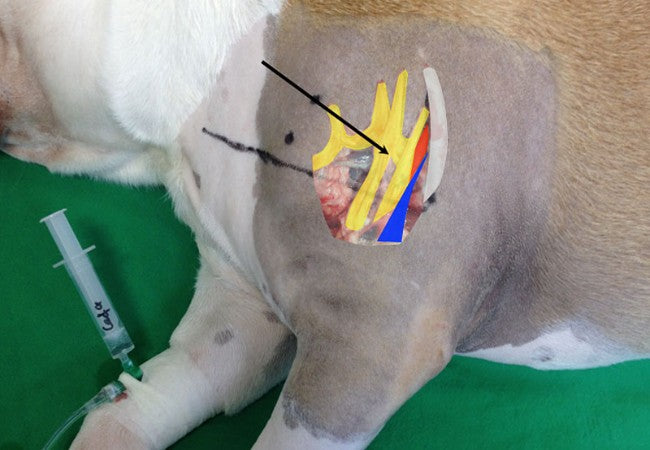Left Anterior Fascicular Block in Dogs: 2025 Vet Guide 🩺🐾

In this article
Left Anterior Fascicular Block in Dogs: 2025 Vet Guide 🩺🐶
By Dr. Duncan Houston BVSc
Hello, I’m Dr Duncan Houston, BVSc, veterinarian and founder of Ask A Vet. In this detailed 2025 article, we explore left anterior fascicular block (LAFB) in dogs, covering what it means, how to recognize it on ECG, potential causes, clinical relevance, management strategies, monitoring plans, and how telehealth enhances care.
1. 🫀 What Is Left Anterior Fascicular Block?
LAFB, also known as left anterior hemiblock, is a conduction delay where electrical impulses are blocked in the left anterior fascicle of the left bundle branch. On ECG, this shows a leftward shift in QRS axis (usually −45° to −60°), a small “qR” pattern in leads I & aVL, and “rS” in II, III, aVF, with QRS <0.12 s.
2. 📈 ECG Characteristics in Dogs
- Left-axis deviation in limb leads
- Delayed intrinsicoid deflection in aVL (>0.045 s)
- Preserved septal Q‑waves (unlike LBBB)
- Often found incidentally—may mask signs of LVH or infarction
3. 🧠 Why It Matters
Although LAFB may be benign, it can indicate underlying structural or ischemic heart disease, such as cardiomyopathy, myocarditis, fibrosis, or degenerative conduction system lesions.
4. 🐶 Potential Causes in Dogs
- Cardiomyopathy (dilated, hypertrophic)—noted in a case study where LV function was assessed
- Ischemic injury—rare in dogs but documented in cats and humans
- Fibrosis or conduction system degeneration—common in aging dogs
- Electrolyte imbalance, pressure overload (e.g., subaortic stenosis), neoplasia, or trauma
5. ⚠️ Clinical Signs & Significance
Most dogs are asymptomatic. If present, signs may include:
- Exercise intolerance or mild lethargy
- Occasional fainting (rare)
- Concurrent murmurs or abnormal cardiac findings indicating underlying heart disease
LAFB itself is not life-threatening, but may co-occur with other arrhythmias like bundle branch blocks.
6. 🩺 Diagnostic Steps
- History & Exam: note symptoms, murmurs, breed predisposition
- ECG: confirms fascicular pattern and rules out LBBB or RBBB
- Echocardiography: check for cardiomyopathy or structural disease
- Bloodwork: assess electrolytes, thyroid, renal function
- Holter monitoring: advised if subtle syncope or suspected progression
- Imaging: chest radiographs or cardiac CT/MRI if indicated
7. ✅ Management & Monitoring
In 2025, management focuses on:
- Identifying and treating underlying disease: cardiomyopathy, subaortic stenosis, metabolic diseases
- Routine follow-up: echo and ECG every 6–12 months if structural heart disease is present
- Holter reevaluation: if new clinical signs appear
- No direct therapy is needed for LAFB itself unless other conduction blocks or arrhythmias are present
8. 🌐 Telehealth & 2025 Innovations
- Home-wearable ECG patches for continuous monitoring
- AI-assisted ECG interpretation for axis shift detection
- Holter streaming integrated into telemedicine platforms
- Video consults via Ask A Vet for reviewing ECGs and adjusting follow-up
- Medication reminders, symptom tracking, and care planning via the app
9. 🏡 Home Care & Tips
- Watch for exercise tolerance changes or occasional fainting
- Track energy levels, appetite, and breathing effort
- Maintain scheduled veterinary evaluations
- Let your vet know if new arrhythmias, murmurs, or heart failure signs appear
- Use app reminders for check-ups and ECG uploads
10. 🐕 Breed & Demographics
- Older, large-breed dogs with more fibrosis or age-related heart changes
- Dogs with diagnosed cardiomyopathy or subaortic stenosis
- Occasional occurrence in healthy dogs—typically benign
11. 💬 FAQs
- Is this safe to ignore?
- Yes, if no associated heart disease—just monitor ECG periodically.
- Do we need medication?
- No—treatment targets any underlying condition causing it.
- Can it progress?
- Uncommon unless other conduction signals like bundle blocks or AV block emerge.
- Should my dog have repeat ECGs?
- Yes, especially if new symptoms, murmurs, or detected structural disease develop.
12. ❤️ Ask A Vet’s Role in Care
- Upload ECGs and Holter data for specialist interpretation
- Receive AI-based alerts for axis changes or new arrhythmias
- Get reminders for diagnostics and follow-ups
- Use video consultations to review findings and care updates
- Coordinate with your local vet for in-clinic diagnostics as needed
Download our app for streamlined cardiac care and confident rhythm monitoring at home.
13. 🔚 Final Summary
Left anterior fascicular block in dogs is often incidental, but should trigger evaluation for underlying heart disease. Diagnosis hinges on ECG and echocardiography. In 2025, remote monitoring, AI tools, and telehealth support will ensure early detection and optimal follow-up, letting your dog continue living a happy, heart-healthy life. Always work with your vet and Ask A Vet for comprehensive cardiac care and peace of mind.
— Dr Duncan Houston, BVSc






